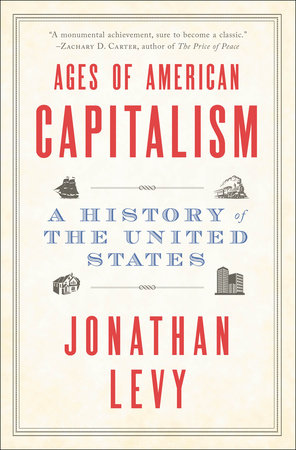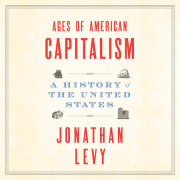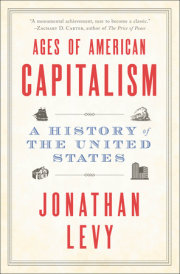Chapter 1MercantilismWealth is power, and power is wealth. The aphorism commonly attributed to the Englishman Thomas Hobbes, author of the great political philosophical treatise Leviathan (1651), was later invoked by Adam Smith in the greatest treatise ever written on commerce, An Inquiry into the Nature and Causes of the Wealth of Nations (1776). Smith was a Scot, not an American, but up until 1776, Scots and Americans shared something in common: both were subjects of the British Empire. In the Age of Commerce, empire and capitalism grew up together.
For centuries, empires had long assessed their control over land, population, and taxable resources. In Europe by the eighteenth century, commerce had become the most dynamic generator of imperial wealth and imperial power. How states might best promote commerce was Smith’s focus in The Wealth of Nations, published the year the thirteen North American colonies declared their independence from the British Empire.
Smith said Britain might let the colonies go, arguing that what he called the “mercantile system”—the imperial policies that defined the commercial relationship between Great Britain and its colonies, against which the North American colonists were then revolting—did not promote the wealth of nations. Smith admired the commercial character of British North America, and today many consider him to be something like a patron saint of capitalism, as, supposedly, he was critical of all government intervention into “the market.” That was not so. Smith was a theorist of political economy, of the relationship between the ordering of power and the generation of wealth. He made no categorical separation between the political and the economic, or state and market. The question for him was their relationship and the consequences of their complicated overlap. The wealth of nations could be the result only of good policy making.
However, The Wealth of Nations does not begin with a policy analysis. Rather, book one lays out Smith’s explanation of economic commercialization. To understand the dynamics of preindustrial capitalism, there is no better place to begin but here. Book one of The Wealth of Nations holds the key to explaining the development of American capitalism from seventeenth-century English colonial settlement through the American Civil War, the era spanning the Age of Commerce.
Smith explained how the self-interested pursuit of commercial gain, breeding more commerce, tends toward an increasing division of labor. When the “extent of the market” for goods expands on the demand side, spurred on by self-interest under the pressures of competition, producers specialize, and on the supply side the division of labor increases. So then does labor productivity. The ongoing search for “gains from trade” induces more capital investment. In the cumulative process, economic activity brings increasing returns. Everyone may gain from trade. The wealth of nations grows. This is what economists today call “Smithian growth,” the combined and interactive result of self-interest, the division of labor, and the extent of markets.
The analysis of commerce in book one of The Wealth of Nations is of great explanatory power, but it is incomplete. For the North American colonies, as well as their commercial character, were conscious political creations, in which politics and Smithian growth dynamically interacted. There was no capitalism in North America prior to the long-term British investment in imperial expansion. By force, states had to increase the “extent of the market.”
The British project to do so was imperialist in character, of a mercantilist variety. Mercantilism had no fixed body of doctrine. Smith named his own enemy when he spoke of the “mercantile system,” as neither he nor anyone who came before him had used the term mercantilism. Nonetheless, during the seventeenth and eighteenth centuries, a common set of basic assumptions about the relationship between political and economic life held together that can usefully be labeled mercantilist.
Foremost, mercantilists promoted an understanding of political economy in which there was no categorical separation between state and market. Smith inherited this legacy. But unlike Smith, mercantilists defined national economic prosperity as the existence of a positive “balance of trade” with other nations. Greater market access and more commerce were the sources of imperial wealth, but only when a nation exported goods of a value greater than it imported, including in relation to its colonies. More coin flowed into the nation’s coffers at the expense of its geopolitical competitors. “Foreign trade produces riches, riches power, power preserves our trade and religion,” insisted East India Company governor Josiah Child in 1681. Mercantilists took for granted a zero-sum global economy, occupied by warring states forever fighting over market access abroad.10 Not all nations could gain from trade, not all at once.
In this economic combat—because so much commerce was seaborne, as goods, in this era, moved far more economically over water than overland—overseas colonies could be of decisive commercial importance. After the English Civil War, the Restoration English state moved to incorporate its wayward early North American colonies into its expanding imperial, mercantilist orbit. As it did, mercantilism transformed, and American capitalism was born.
1. The First Earl of Shaftesbury
The great pivot for British North American commercial development was the period after 1660, when Parliament restored Charles II to the British throne eleven years after the execution of his father in the English Civil War. Up until then, English colonization had been a haphazard affair, with early efforts leading to repeated failures—in terms of survival, let alone commercial gain. A few ventures had “planted” lasting settlements in the Caribbean, the Chesapeake, and New England, but these colonies were still afterthoughts back home. Asia, the “East Indies,” compelled much greater interest.
The Restoration English state reasserted authority over the Atlantic colonies. Legislation, including a series of parliamentary “Navigation Acts,” sought to restrict much American colonial commerce to within the English Empire (and within the British Empire after the 1707 Act of Union between England and Scotland). The political-economic settlement was to last throughout the eighteenth century. The British Empire strengthened in the Atlantic, commerce flourished, and the North American colonies prospered.
Among those who had crossed the English Channel to the Netherlands in order to persuade Charles II to return from exile was Sir Anthony Ashley Cooper, soon to be Lord Ashley. In 1672, serving as Charles II’s lord chancellor, Ashley became the first Earl of Shaftesbury. Shaftesbury was to be a leading figure in Restoration England. During the Civil War, he had played both sides, Crown and Parliament, before joining the victorious forces of Oliver Cromwell. After Cromwell’s death, Shaftesbury then helped to restore Charles II to the throne. But he remained a vocal critic of royal absolutism, becoming a founder of the liberal-minded Whig Party. He opposed Charles II’s wish for his Catholic brother James to follow him on the throne, and he fell out with the king in 1673. Eventually, in 1682, Shaftesbury fled England for his own Dutch exile. But he fell ill in Amsterdam and died in 1683.
By then, Shaftesbury’s name had been dragged through the mud. When the king first broke with him, the earl’s nemesis, the great French mercantilist Jean-Baptiste Colbert, had reveled in the political downfall of “the most knavish, unjust and dishonest man in England.” Meanwhile at home, Lord Ashley’s political opponents accused him of tarnishing “Old Beloved Commonwealth Principles” for the sake of his own private commercial self-interest.
A public figure, Shaftesbury did have a great number of private commercial interests. He was a “gentlemen capitalist” of the rising English Empire. As a member of the gentry class, his Dorchester landholdings were vast. Like many Whigs, and unlike many of their Tory political opponents, Shaftesbury was among the more enterprising of English lords. He sought to “improve” his lands and thereby increase their productivity and commercial yields. In that process, land became something more than the property and wealth that sustained gentry class rule. It also became a form of productive capital.
Shaftesbury was also involved in many commercial projects abroad, although he avoided established lines of commerce with Europe and Asia. He took little interest in New England. If Hobbes famously called the state of nature “nasty, brutish, and short,” Cromwell called New England “poor, cold & useless.” Shaftesbury’s private commercial interests concentrated on the West Indies.
Copyright © 2021 by Jonathan Levy. All rights reserved. No part of this excerpt may be reproduced or reprinted without permission in writing from the publisher.








